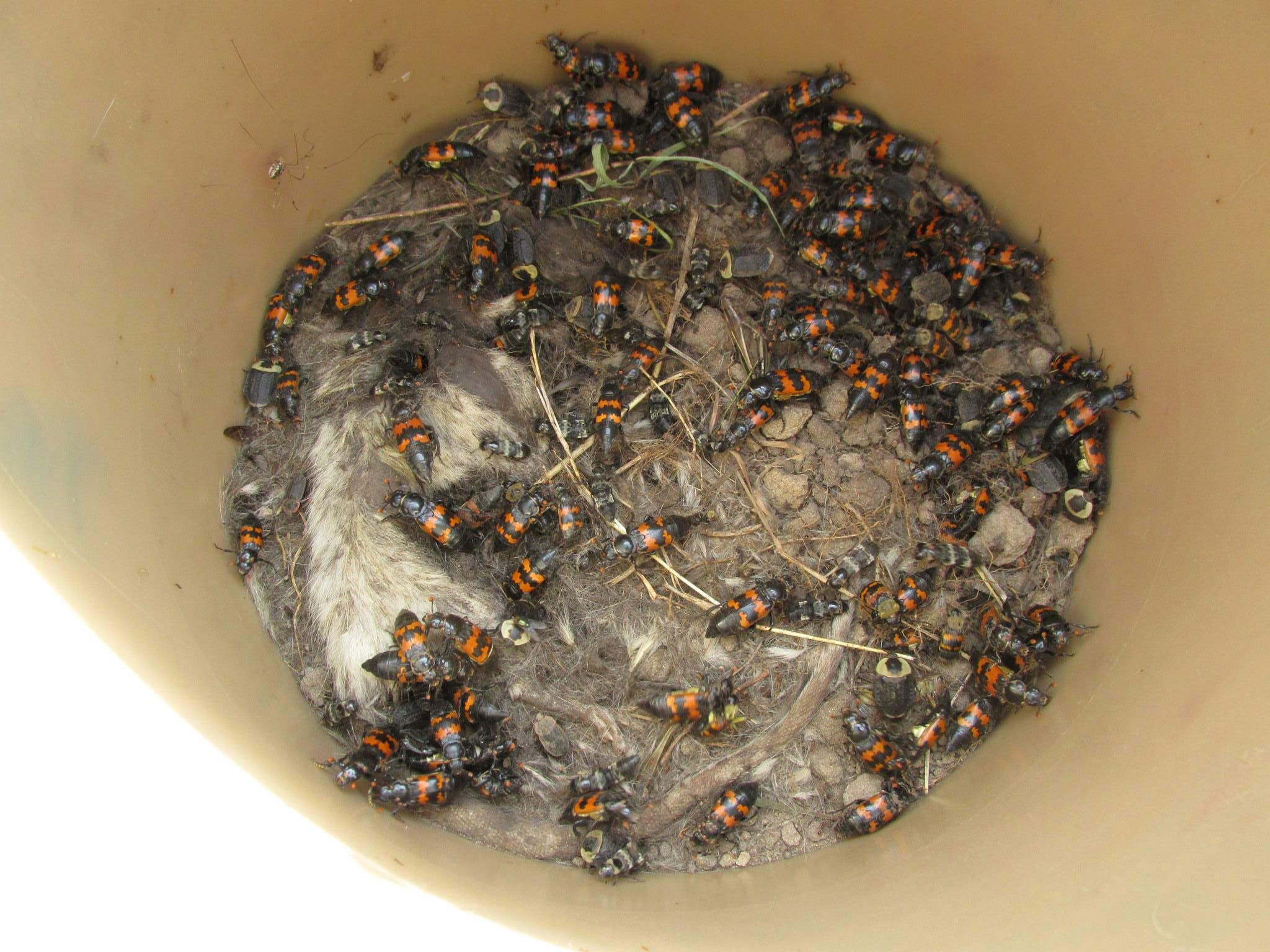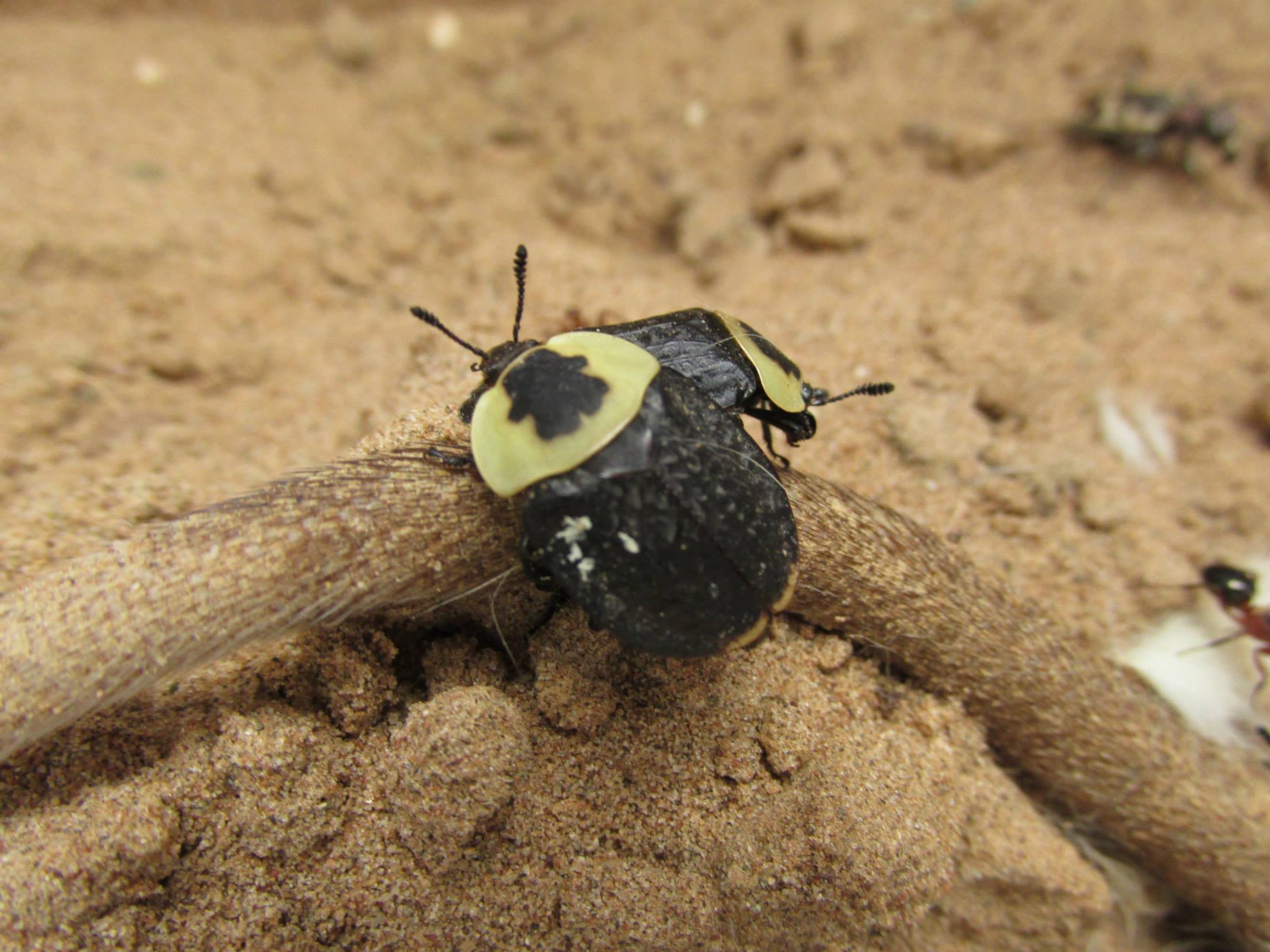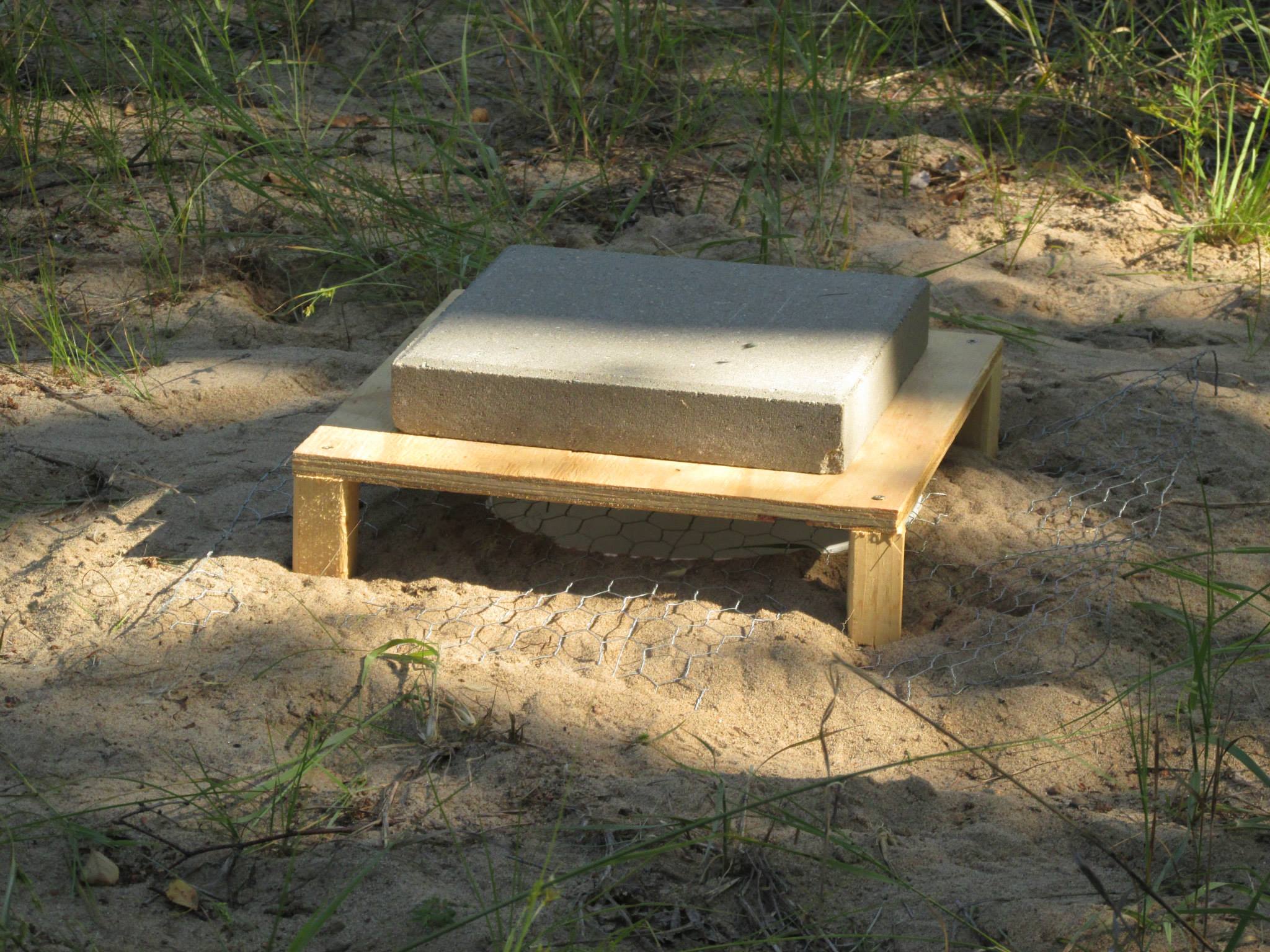In search of nature’s undertakers
/Guest blog post by Harland Hiemstra, MNDNR Information Officer. (Originally released August 18, 2014)
DNR Nongame Wildlife Specialist Chris Smith demonstrates the use of an identification chart to determine what types of burying beetles have been found in a trap set out in the Sherburne National Wildlife Refuge.
Chris Smith is on a hunt for buried treasure.
A short hike off a road in the Sherburne National Wildlife Refuge, near Zimmerman, he drops to his knees next to a hole in the ground that’s been covered with chicken wire, plywood, and a concrete weight. As he removes the makeshift cover, a sickeningly sweet stench wafts out. Smith, a Nongame Wildlife Biologist with the Minnesota Department of Natural Resources, wrinkles his nose as he reaches into a buried five-gallon plastic bucket and pulls out the deflated carcasses of two very dead, very rotten rats.
Secured from a local reptile food vendor and aged several days in the back of his work truck, the pungent rodents are bait for the objects of Smith’s search: the American Burying Beetle (Nicrophorus americanus), a federally listed endangered species that used to be found across the eastern half of the country. Now it’s known to survive in only a handful of states. Black and orange and sometimes nearly 2 inches long, it hasn’t been seen in Minnesota since the late 1960s.
The ripe carrion Smith buried the day before in what’s known as a “pitfall trap” attracts a variety of burying beetles from anywhere within about a half-mile radius. He sifts through a shallow layer of sand at the bottom of the bucket, removing beetles one by one, calling off their scientific names so that his colleague, Erica Hoaglund, can enter the information into an electronic tablet.
“Nicrophorus tomentosus, Nicrophorus orbicollis, marginatus, another tomentosus...”





The burying beetles often are found in even numbers – an adult male and an adult female — due to a type of hands-on parenting that’s rare in the insect world. The parents work together to bury the dead animal to get it away from competing scavengers. They chew up a portion of the carcass and form it into a large ball to make a nest for the larvae, which they feed by regurgitating chewed-up, liquefied flesh – much as bird parents feed their chicks.
Why, one might ask, spend time and money studying a critter seemingly made to tickle a person’s gag reflex? Because, as disgusting as they may seem, detritivores such as burying beetles – nature’s undertakers – play an important role in an ecosystem, breaking down dead animals to recycle nutrients and energy. And it’s that ecosystem and its health that’s really the main point of concern.
“The biggest reason to study the entire ecosystem as opposed to just charismatic mega-fauna is to understand how ecosystems function, and how all the parts work together,” Hoaglund says. “What we want to preserve and protect is these ecosystems, not just a particular species.”
If an organism goes extinct, more may be lost than just that particular species. One theory regarding the American burying beetle, for instance, surmises that its decline is at least partially tied to the extinction of the passenger pigeon, which may have been just the right size to serve as a host, and it existed in large numbers, making it a readily available food source. In another example of ecological interdependence close to home for Minnesotans, the red parasol moss last year was added to the state’s list of endangered species because it grows only in old moose dung, and moose populations are declining.
Hoaglund explains ecosystem diversity by referring to a ladder: lose one or two rungs, and the ladder still might be serviceable. Lose a few more, and the ladder will fall apart. The biological equivalent is the extinction of too many species and ecological collapse.
“Even if you don’t value the creepy crawly things, something you do value may depend on them,” Hoaglund says. “Flowers need insects for pollination; songbirds rely on bugs for food.”
So far Smith and Hoaglund haven’t turned up any American burying beetles at any of the pitfall traps they’ve buried around the Sherburne refuge and the adjacent Sand Dunes State Forest. They may, however, have found a species of burying beetle never before reported in Minnesota at another central Minnesota survey site at Camp Ripley, near Little Falls; the discovery is pending positive identification. Their work also is providing information on what other types of burying beetles are present in the area, baseline information that would be needed should it be decided to try re-introducing the rare bugs into Minnesota, as has been done in a few other states.
Both Hoaglund and Smith work for the DNR’s Nongame Wildlife Program, which aims to protect, maintain, enhance, and restore native nongame wildlife resources, helping more than 700 species of Minnesota wildlife thrive. It is funded largely by donations, especially those made when Minnesotans file their state income taxes and voluntarily contribute to the program by checking a special donation box, a feature often referred to as the “chickadee check-off.” More information about the DNR Nongame Wildlife Program can be found online.
Update (21 Jan. 2016):
The burying beetle captured in 2014 at Camp Ripley, Morrison County, Minnesota was confirmed to be Nicrophorus guttula. This specimen represents the second documented occurrence for this species in the state of Minnesota (Sikes, pers. comm.). The other specimen was collected at Duluth, Saint Louis County, Minnesota, and is suspected to date back to the early 1900s (no collection date on label).
Update (1 August 2016):
You can now download a copy of the two page Illustrated Key to the Burying Beetles (Nicrophorus spp.) of Minnesota!
The Field Ecology Blog is meant to be informational and thought provoking. Wherever possible, I provide links to supporting external resources. Views expressed here do not represent the views of my employer(s).




